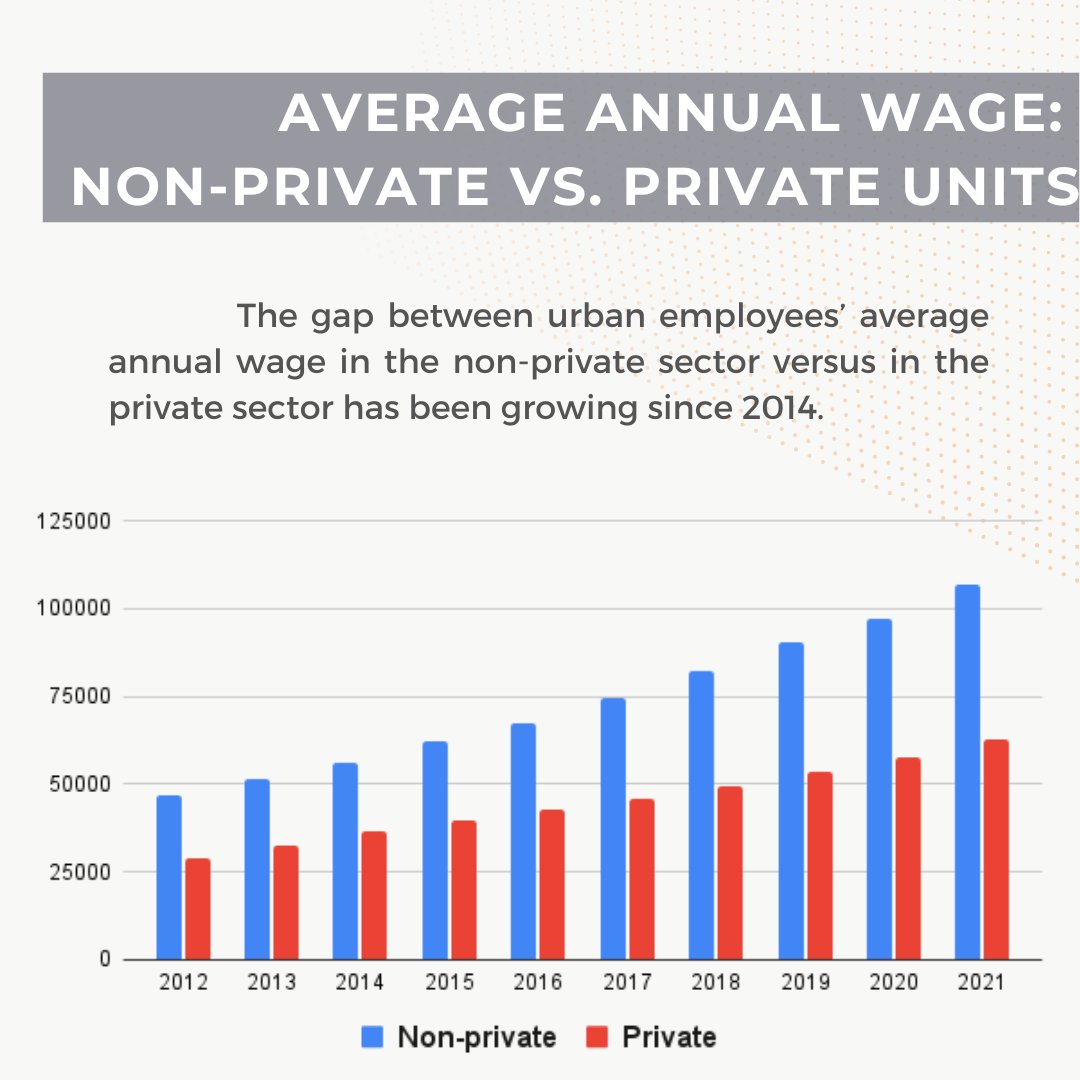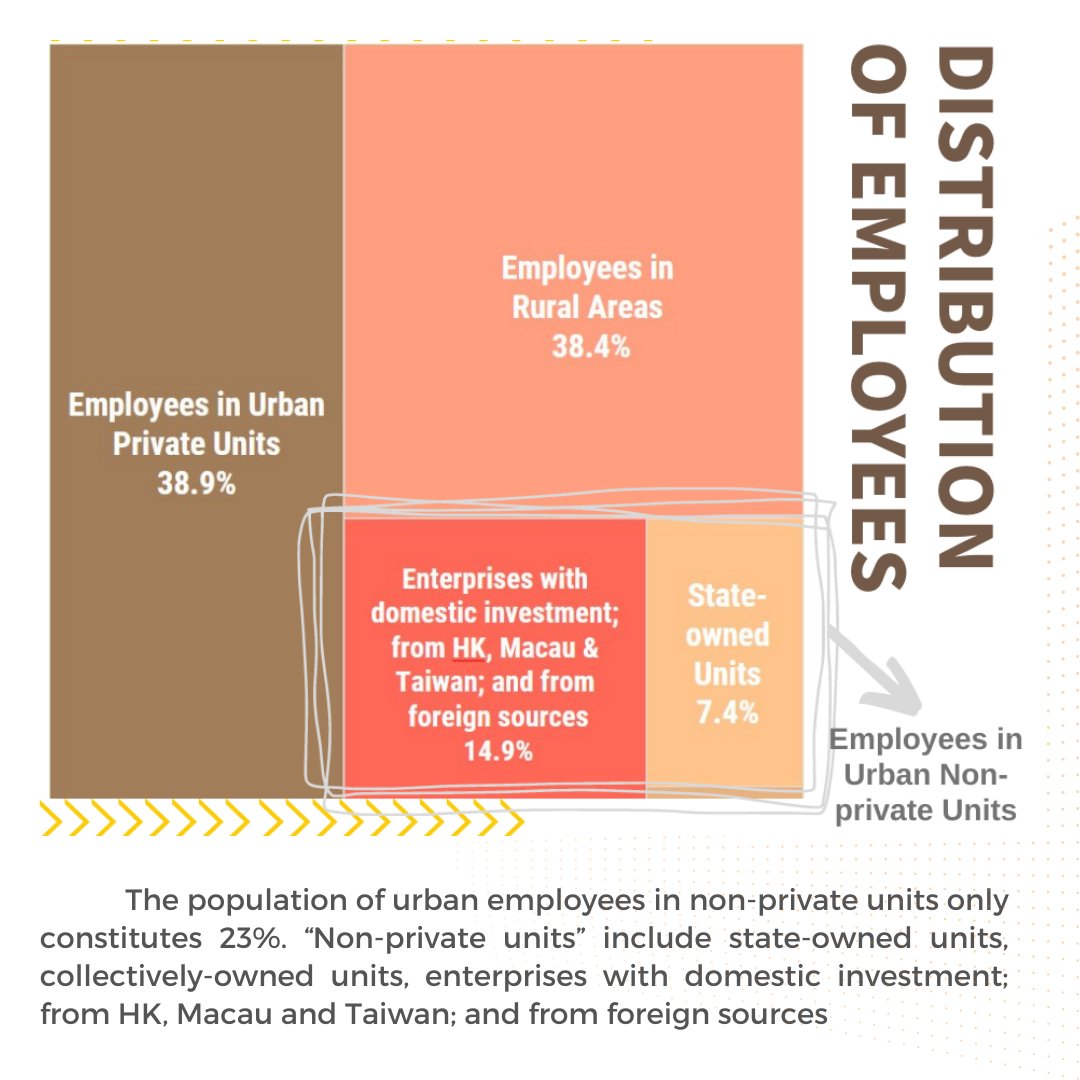How much do workers in China actually get paid?
Most cities and provinces in China have released their statistics on salaries, including average and minimum wages.
1. Average Annual Wage: Non-private vs. Private Units
The gap between urban employees’ average annual wage in the non-private sector versus in the private sector has been growing since 2014.
2. Distribution of Employees (2020)
The population of urban employees in non-private units only constitutes 23%. “Non-private units” include state-owned units, collectively-owned units, enterprises with domestic investment; from HK, Macau and Taiwan; and from foreign sources.
3. Minimum Wage Adjustment
2004: China’s Minimum Wage Regulations, implemented by the then-Ministry of Labour and Social Security, states that regional governments should adjust the minimum wage at least once every two years, according to local economic conditions.
2017: Guangdong province released its “Plan to reduce economic costs for enterprises,” which calls for adjustment of the minimum wage at least once every three years.
Currently: Other provinces and regions soon followed suit, adjusting minimum wage less frequently than once every two years.
4. Minimum wage increases slow down
Taking Guangdong Province as an example, the minimum wage increased by 46% in the five years from 2012-2017, but by only 21% in the last five years.
5. Minimum wage is too low
In many cities and provinces, the minimum wage is only 25%-35% of the average wage. China’s Regulations on Minimum Wage stipulate that the minimum wage should be 40-60% of the average local wage.




